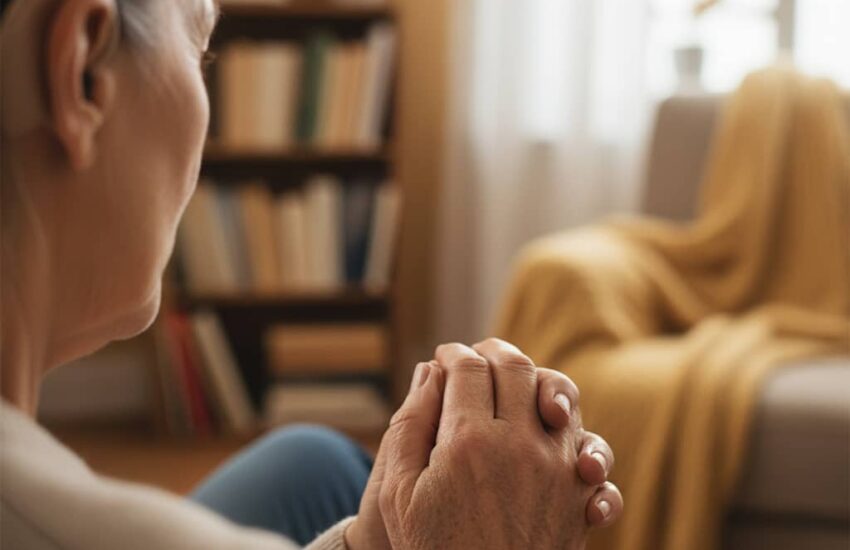I will never forget the year my grandmother seemed to change. The vibrant woman who loved crossword puzzles and lively family dinners began to retreat into a quieter version of herself. We made assumptions, as families often do. We thought it was a natural part of aging, perhaps a bit of stubbornness or even the early signs of cognitive decline. It was not until a routine doctor’s visit included a simple hearing test that we discovered the truth. The world had not become less interesting to her; it had simply become muffled and indistinct. The crossword puzzles were abandoned not because she lost her wit, but because she could no longer see the newsprint clearly. That was the moment I understood that preserving sight and hearing is not about mere convenience; it is about preserving the very connections that make life worth living. I watched my grandmother slowly withdraw from conversations and hobbies she once loved. It was not a lack of interest, but a loss of connection. This is why regular vision and hearing screenings are a cornerstone of dignified aging.

For seniors, especially those in nursing homes or living alone, the world can become smaller with every unaddressed sensory loss. The consequences extend far beyond missing a word on television or misreading a label. I have seen how untreated hearing loss creates a profound sense of isolation. When following a conversation becomes a exhausting exercise in guesswork, the easier path is to simply stop trying. Social withdrawal sets in, not from a desire to be alone, but from the frustration and embarrassment of constantly asking for repetition. This isolation is a known risk factor for depression and anxiety. The simple act of restoring hearing through a properly fitted aid can reopen the channels to family, friends, and caregivers, fighting the loneliness that can be so corrosive to the spirit.
The risks associated with poor vision are equally stark and deeply practical. Our homes, even the most familiar ones, are filled with hidden dangers for someone with compromised eyesight. I think of throw rugs that become tripping hazards, stair edges that blur into a single plane, and medication bottles with labels that are impossible to decipher. A fall from misjudging a step can mean a broken hip, a loss of mobility, and a catastrophic decline in overall health. Regular vision screenings ensure that prescriptions for glasses are current and that conditions like cataracts, glaucoma, and macular degeneration are detected early. This is not just about seeing clearly; it is about moving safely through one’s environment and maintaining the physical autonomy that defines independence.
Perhaps the most compelling connection I have learned about is the one between sensory health and cognitive function. Our brains are designed to process a constant stream of sensory input. When the sounds of conversation or the visual details of a room are cut off, the brain is deprived of this essential stimulation. Research increasingly shows a strong link between untreated hearing loss and an accelerated rate of cognitive decline. The brain must work so hard to decode fragmented sounds that it redirects resources from other critical functions like memory and executive function. Keeping the senses sharp, therefore, is a proactive defense for the mind. It is about providing the brain with the rich, clear data it needs to stay active and healthy.
Advocating for regular screenings, whether for a parent at home or a loved one in a care facility, is one of the most concrete acts of care we can offer. These are not complex or invasive procedures. They are simple, quick checks that can profoundly alter the trajectory of an older adult’s life. They are the key to ensuring that a senior remains engaged, safe, and mentally sharp. It is about more than diagnosing a problem; it is about unlocking a solution that allows for laughter around a dinner table, the joy of reading a beloved book, and the confidence to navigate the world with dignity. We are not just preserving sight and sound; we are preserving the person.
References
Gopinath, B., Kifley, A., Flood, V. M., Wang, J. J., & Mitchell, P. (2023). Monitoring hearing and vision functions in older adults. *Frontiers in Aging Neuroscience*, 15, 10615057. https://doi.org/10.3389/fnagi.2023.10615057
Hwang, A., Jrade, L., & Jiang, G. (2021). Preventive home visit (PHV) screening of hearing and vision among older adults. *Journal of Multidisciplinary Healthcare*, 14, 1405–1417. https://doi.org/10.2147/JMDH.S312152
U.S. Centers for Disease Control and Prevention. (2022). Visual impairment and hearing loss in older adults. *CDC Healthy Aging*. https://www.cdc.gov/aging/publications/features/vision-hearing-loss.html
Promise Care Management. (2024). The benefits of regular vision and hearing tests for older adults. Retrieved from https://promisecaremanagementservices.com/the-benefits-of-regular-vision-and-hearing-tests-for-older-adults
National Institute on Deafness and Other Communication Disorders. (2023). Hearing loss among older adults. National Institutes of Health. https://www.nidcd.nih.gov/health/hearing-loss-older-adults

